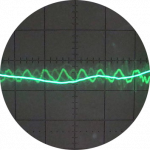VDI 2035 heating water specification
Anyone using VDI 2035 to control the water quality within their heating circuit. Basically used in Germany and other countries, used by Heat Geek.
Fairly simple water specification, keep pH, conductivity and total scale products within a range at first fill and then monitor annually there after. No chemicals, no glycol.
I've heard about VDI 2035 but haven't personally used it. It sounds like a solid approach, especially since it avoids chemicals and glycol. How has your experience been with it so far? Do you find the annual monitoring manageable, and have you noticed any significant benefits in terms of system performance or longevity?
Get a copy of The Ultimate Guide to Heat Pumps
Subscribe and follow our YouTube channel!
Posted by: @editorI've heard about VDI 2035 but haven't personally used it. It sounds like a solid approach, especially since it avoids chemicals and glycol. How has your experience been with it so far? Do you find the annual monitoring manageable, and have you noticed any significant benefits in terms of system performance or longevity?
Not using yet, currently have glycol in, but wanting to monitor performance. Already have a heat meter, but it's not suitable for glycol. So looking to flush out. I have some complications one being we are on well water and it's way to hard without softening. So cannot use straight tap water.
Already have a fill and flush point so pretty easy to replace glycol with water.
Equipment with VDI 2035 against it seems to be a ridiculous price when comparing to the same equipment with Pole fed window cleaning against it. It seems to use the same chemistry. Which Ion Exchange, with a mixed bed of Cation and Anion exchange beads.
I was thinking of setting up something like this. Do an initial fill with hose pipe, via the flush connectors, then connect up this type of set up with flexible hoses, so I can disconnect after.
Have a spare pump.
Just need a clear 10" filter and something like this
Purolite MB400IND is a mixture 40% Gel Strong Acid Cation and 60% Gel Type Strong Base Anion.
The higher percentage Anion should strip the CO2 out and leave an alkaline biased water, I think?
@johnmo very interesting. Have you got a rough idea of costs (just the hardware)?
Interesting about the fact you're on well water. We have a well that I've always been keen to use, but just haven't had the time to look into. There's a lot to consider, and it could be a project for next spring. If you have the time, I'd be interested to hear more about your well. If you are up for sharing, feel free to start new thread in "Your Home".
Get a copy of The Ultimate Guide to Heat Pumps
Subscribe and follow our YouTube channel!
Been looking and it seems a good little project.
Everything labeled as VDI 2035 seems to come at a premium price, so been looking at alternatives to get very low conductivity water, with hopefully a suitable pH.
So have ordered
10" clear filter housing with 3/4" ports. With Hozelock fittings.
A refillable housing for DI resin media.
Purolite MB400IND Mixed Bed Indicator DI resin - which is 60% Anion/40% Cation. Bought 2L which should be loads.
The Anion increased percentage should strip out the CO2 to hopefully leave a slight alkaline water.
The idea is flush system with my hard water to get the glycol out. Then flush via the resin filter with low conductivity water.
Then leave in place connected via the fill and flush manifold for any top-up required. And use the garden hose connector to give top ups.
Basically started flushing yesterday by slowly pushing out the old heating water with demin (ion exchange) water at a rate of around 1L/min. The old stuff was brown and smelling very unhealthy. When I stopped last night is fully clear, but you could still smell the glycol.
Water at start
Water when I stopped last night.
System was left to circulate overnight.
This morning. Moved to having the ASHP circulation pump on and slip steaming demin (ion exchange) water in, so 1 litre in 1 litre out, this morning and got the water to just better than tap water.
Checking tap water and circulation water at the same time.
Tap
Dissolved solids 180ppm
Conductivity 380 microsiemens
Circulation water
Dissolved solids 166ppm
Conductivity 320.
Now have a side stream set up to push circulation water into the ion exchange filter, without adding new water. Aiming for below 150 ppm dissolved solids or below - currently at 166 compared to tap water of 180 ppm.
Ion exchange filter, the media starts blue and as depleted turns light brown. Using a simple garden hose flow meter from B&Q.
Flushing manifold (Installed up side down but works ok)
One thing that surprised me was the effect on system flow rate. Nothing had been changed except the fluid pumped.is now straight water. Prior to clearing the glycol mix from the system, it was circulating 1m³/h, this morning just below 1.3m³/h.
So a question
Do I leave the flow rates high or adjust the UFH manifold rates down to bring overall rate down?
@johnmo Thanks for an interesting topic. I have been looking at Severn Trent's figures for my postcode's water quality. Average pH is 8.39 (Range 7.93-9.29), conductivity is 123μS/cm (Range 120-127) and hardness is moderately soft. I'm not sure what the latter would be in parts per million, but I assume that it would be < 200 ppm. If I have understood the Heat Geek article correctly, then simple tap water should be sufficient for my system. What I am unclear about is whether there are any disadvantages from adding a chemical inhibitor in this scenario? I believe that one was added last time my system was filled. I don't have glycol.
Your water looks to in a similar place to mine, after I treated it. Certainly VDI mandate not to use chemicals. Think the trouble with chemicals is when new great, but then after some time becomes depleted, so you add more, eventually becomes a toxic soup.
-
Where has Watson gone?
3 weeks ago
-
First time wall mounting an ASHP
1 month ago
-
How can I programme a setback for my Samsung Gen6 8kW heat pump?
1 month ago
-
Rodents! A word of warning for heat pump owners
2 months ago
-
Retrofitting: moving to ASHP old oil boiler in large old property - experience/advice please on MSC calcs
3 months ago
- 26 Forums
- 2,342 Topics
- 53 K Posts
- 599 Online
- 6,000 Members
Join Us!
Worth Watching
Latest Posts
-

Has Anyone Else Noticed a Decline in Tradesmanship?
I’m posting this as off topic because it isn’t just abo...
By Mars , 2 minutes ago
-
RE: Different dT on each radiator?
The way heating systems are designed will result in rou...
By JamesPa , 21 minutes ago
-
RE: Heat Pump Performance Analysis Web App using Modbus Data
I have created a beginners guide to provide a walkthrou...
By redzer_irl , 5 hours ago
-

RE: Setback savings - fact or fiction?
PS by visually merging the two tables as above, I ended...
By cathodeRay , 10 hours ago
-
RE: Samsung ASHP scheduling help
Correction to the post above (my time to edit has run o...
By redzer_irl , 10 hours ago
-

RE: Homely for Daikin Altherma 3 - Petersfield Area
@russ If you would care to pose your questions on one o...
By Toodles , 12 hours ago
-

RE: A Smarter Smart Controller from Homely?
@papahuhu I have a feeling that my Homely smart control...
By Toodles , 12 hours ago
-

RE: The good, the bad and the not that great – my heat pump installation
@cathoderay the guy I spoke to on the phone seemed very...
By Burtis , 22 hours ago
-
RE: Configuration issues with 10kW Midea R32 heat pump
Sorry that was a screenshot of @curlyKatie - mine has...
By SteveT , 1 day ago
-
RE: British Gas vs Octopus Energy vs Heat Geek vs EDF vs Aira vs OVO vs EON.Next vs Boxt
I get the impression that that comment "they don't comm...
By JamesPa , 1 day ago
-

@majordennisbloodnok Just in case there are variations ...
By Toodles , 1 day ago
-

RE: Latest NIBE model has known defect and no solution
@kings I’m glad I could help. NIBE are taking this very...
By Mars , 1 day ago
-
RE: Octopus Cosy Heat Pump Owners & Discussion Thread
@jamespa yes, I'm under no illusions but in some respec...
By AndrewJ , 1 day ago
-
RE: Poll for Time of Use, tariffs, technology
@majordennisbloodnok thanks. Unfortunately i can't upd...
By Tim441 , 1 day ago
-
RE: Electricity price predictions
It seems the end of cfd payments is in sight, even if a...
By Batpred , 2 days ago
-
-
@pie_eater Yes, I installed Homely to a Daikin heat pum...
By gery , 2 days ago
-
RE: Havenwise App Help & Forum Support – Get the Most from Your Heat Pump
@davidalgarve Potentially stupid question, but are you ...
By Sheriff Fatman , 2 days ago
-
RE: What a Bad Heat Pump Installation Looks Like
Spot on, for relatively little money, an air of ready "...
By Batpred , 2 days ago











